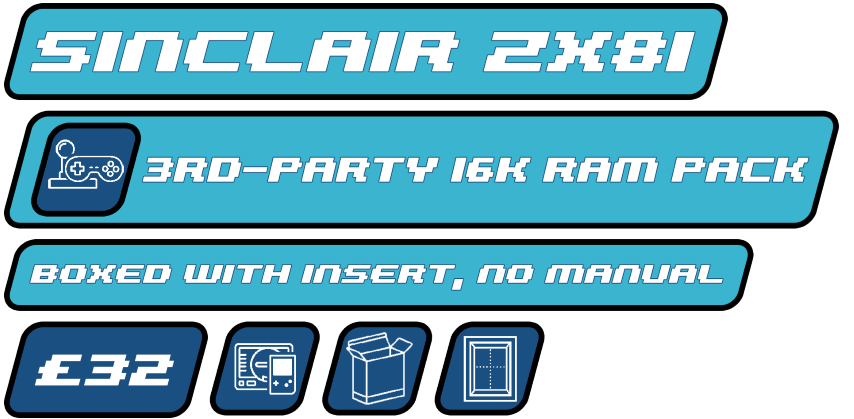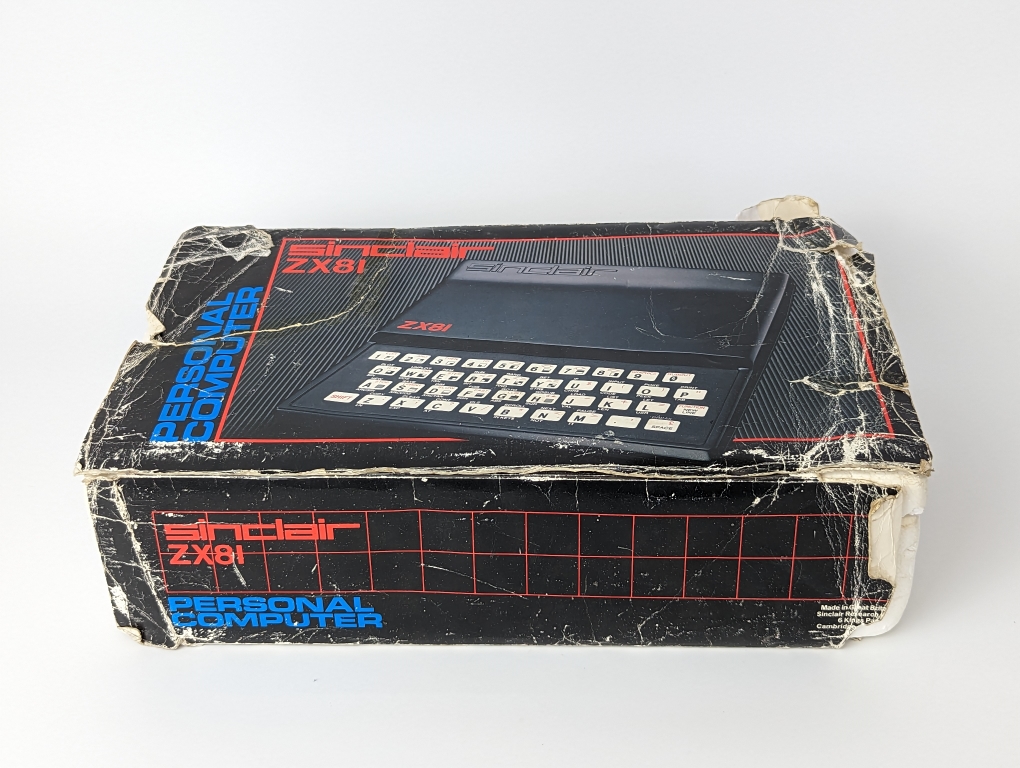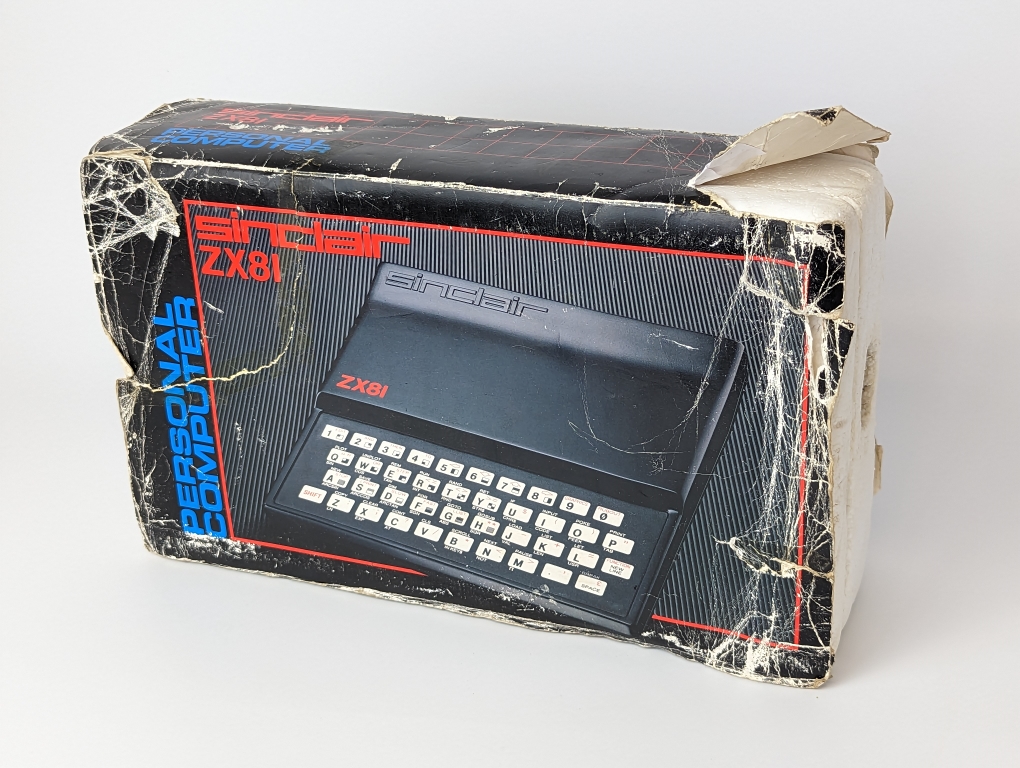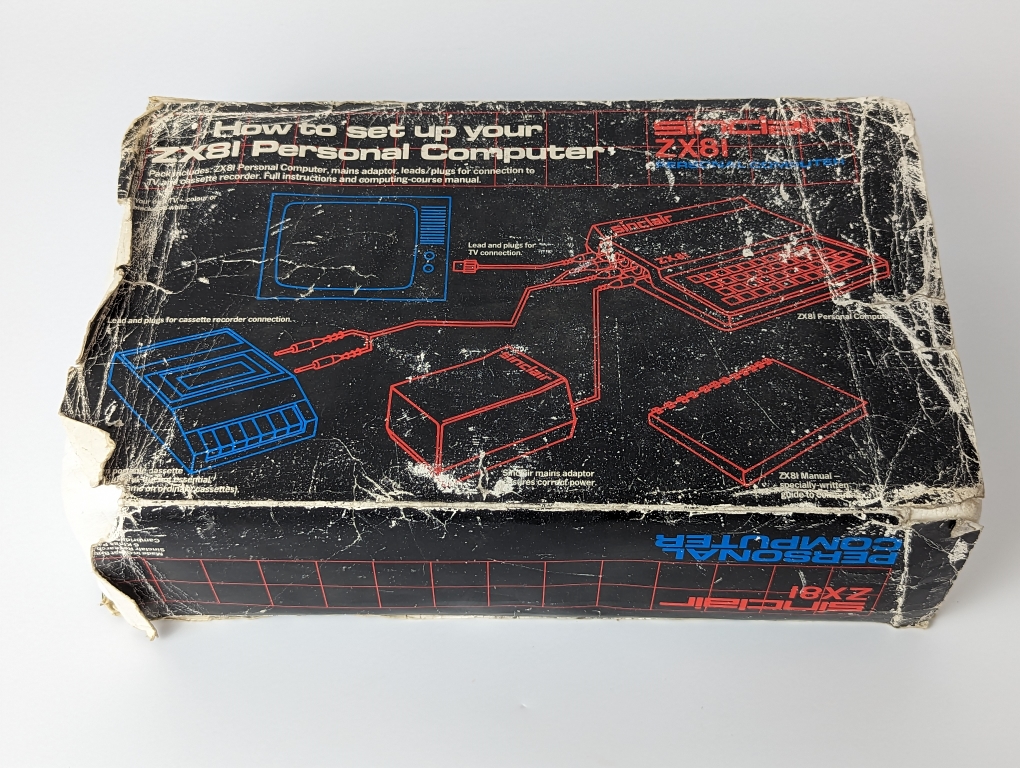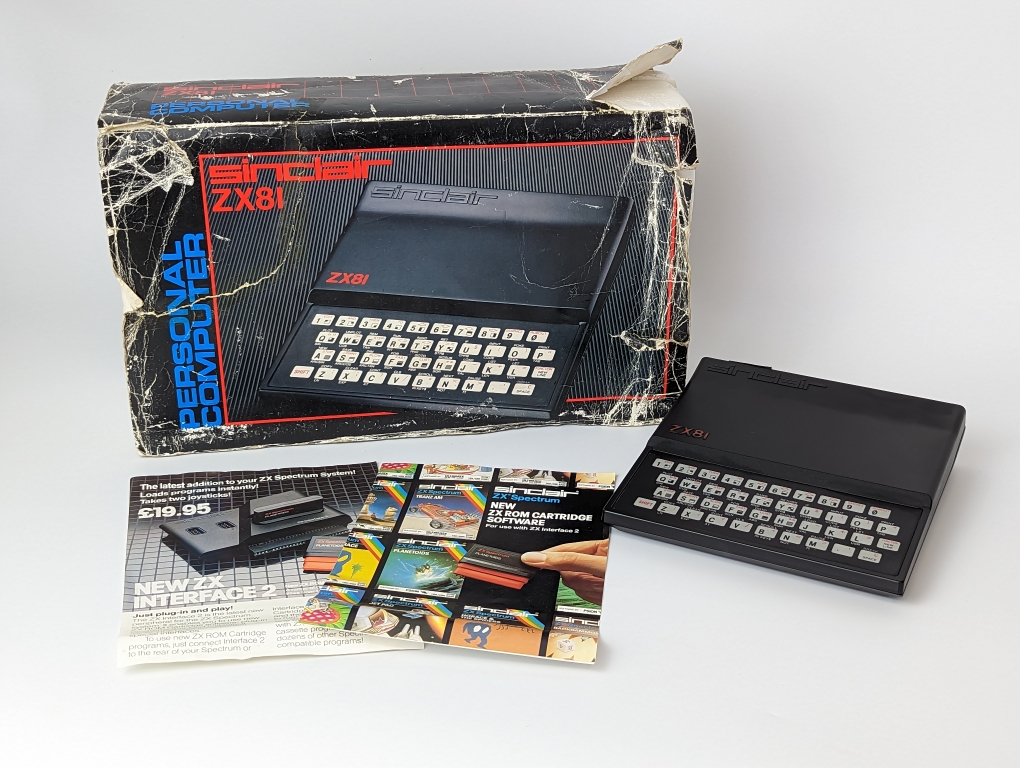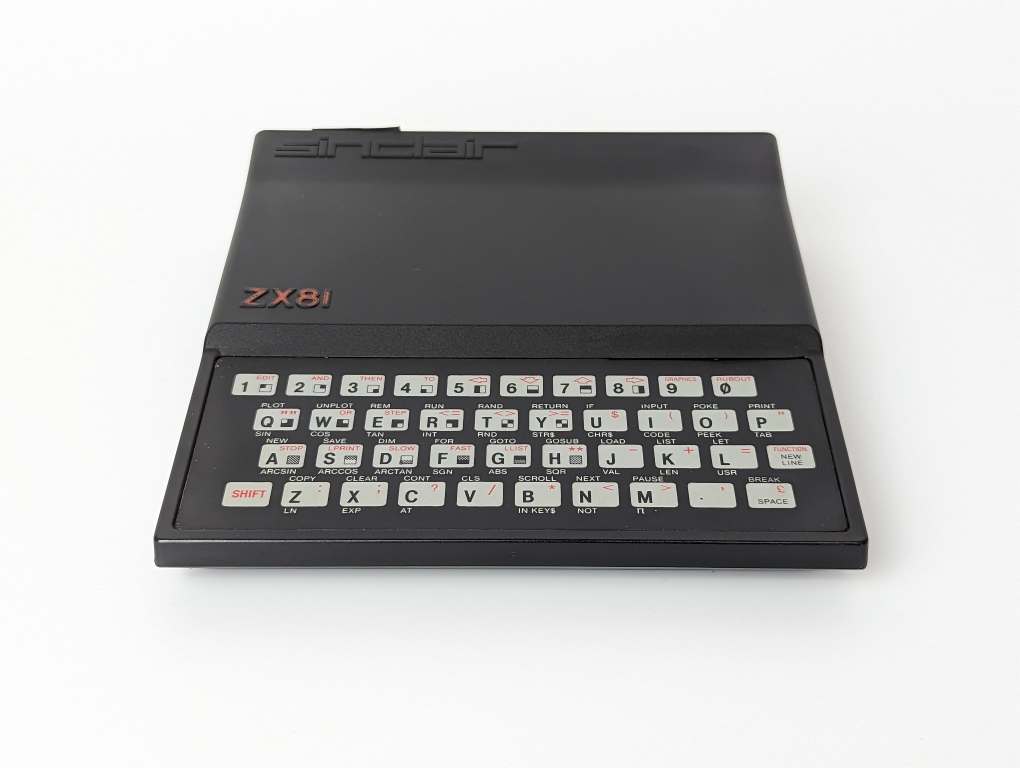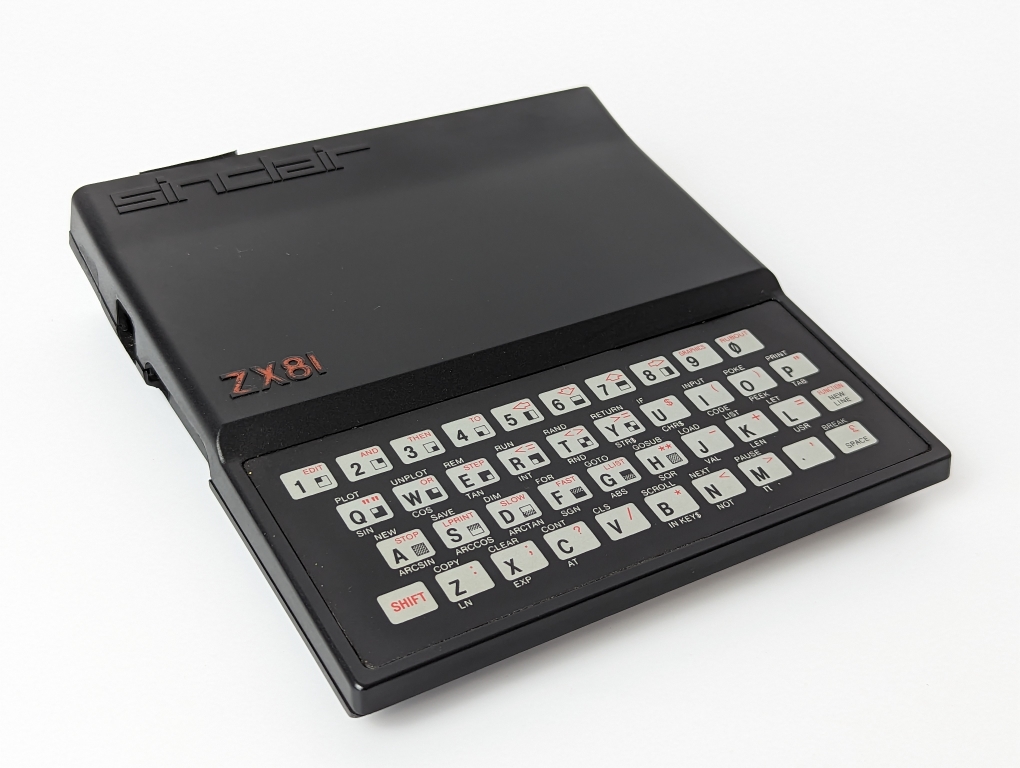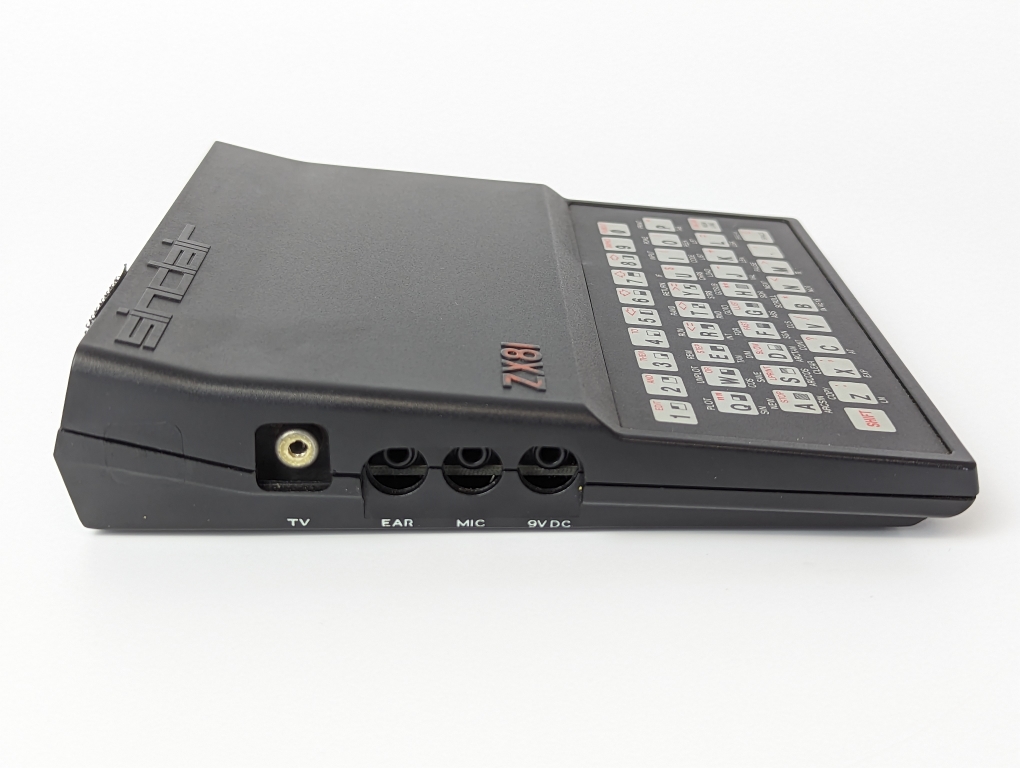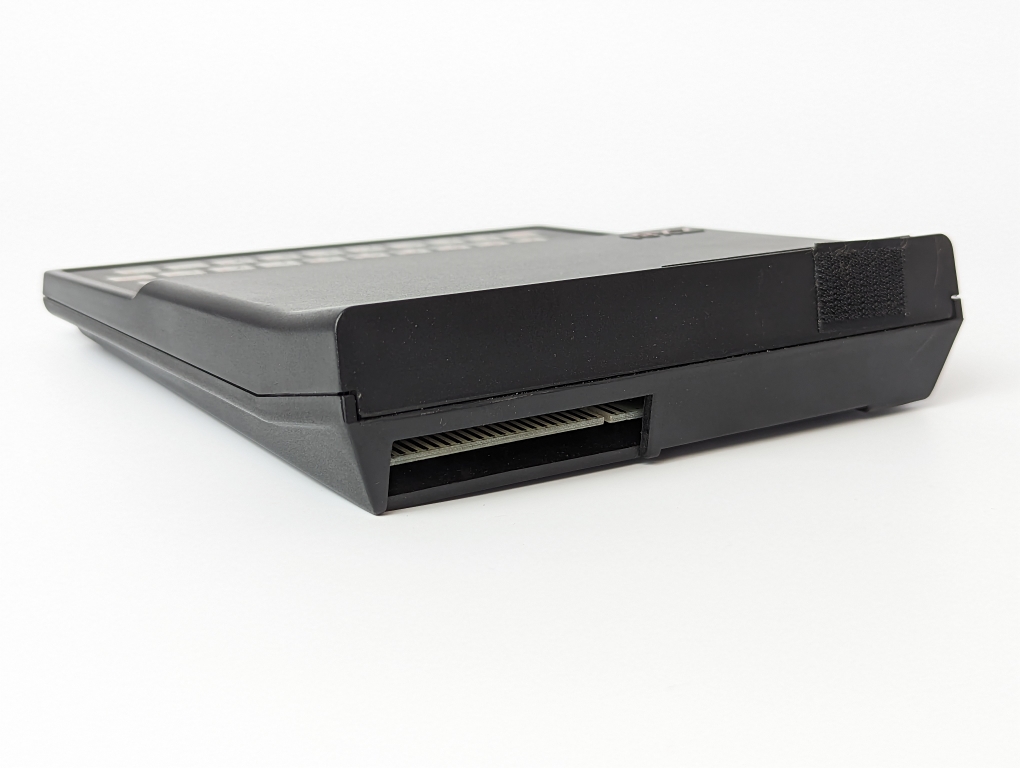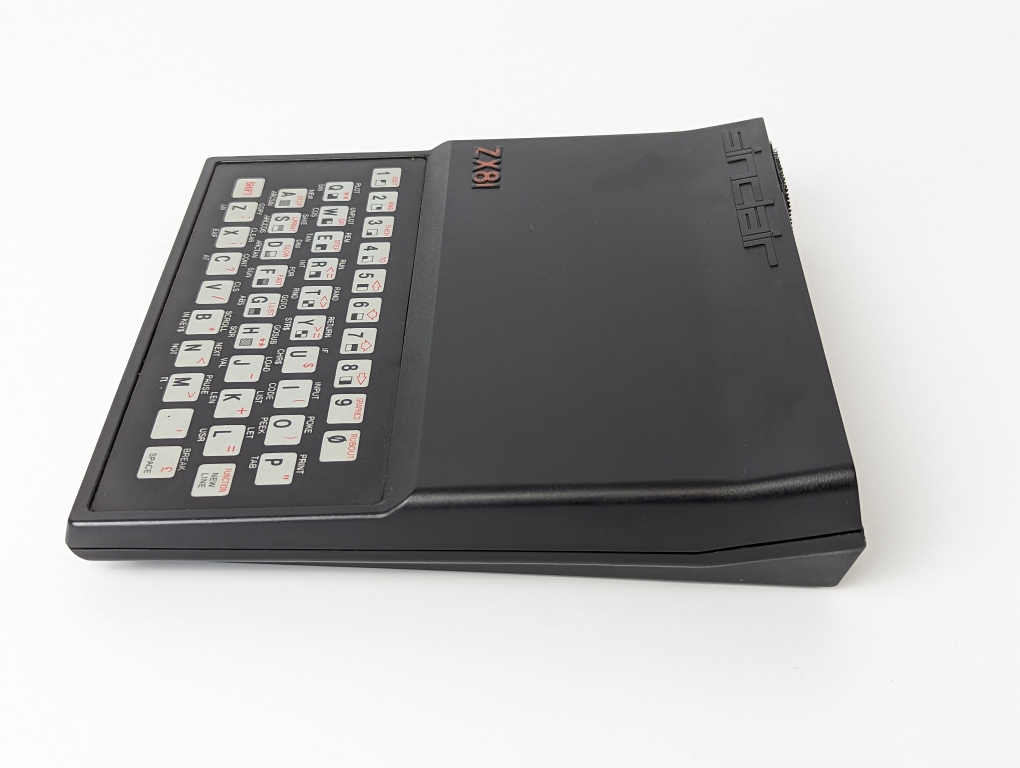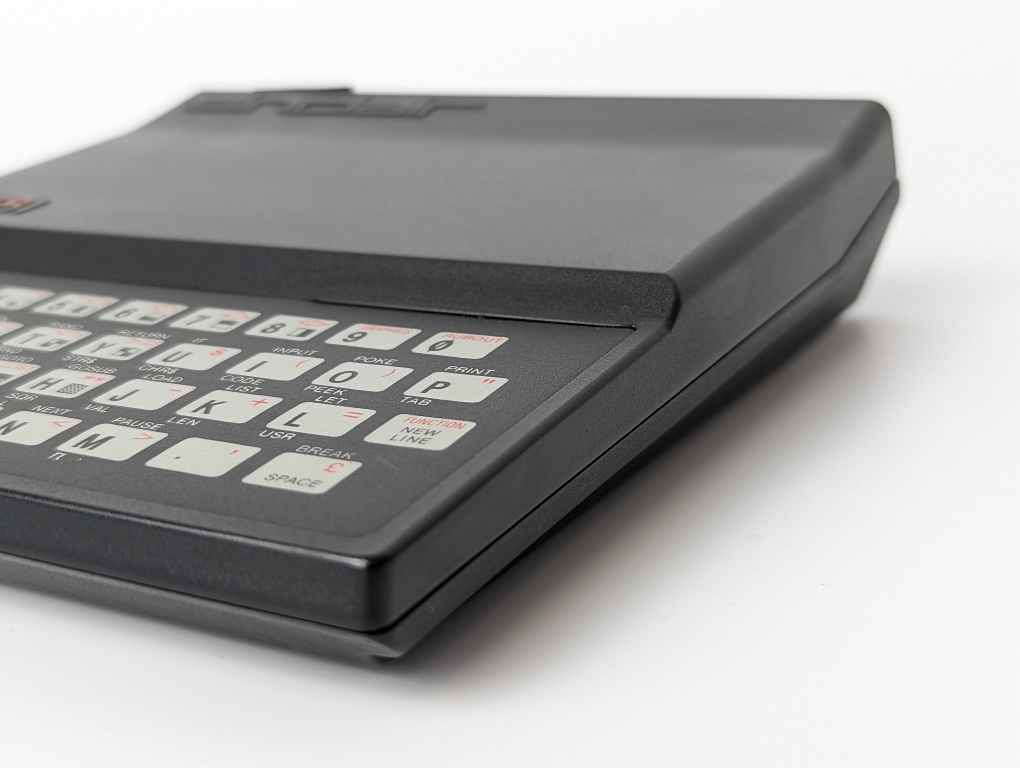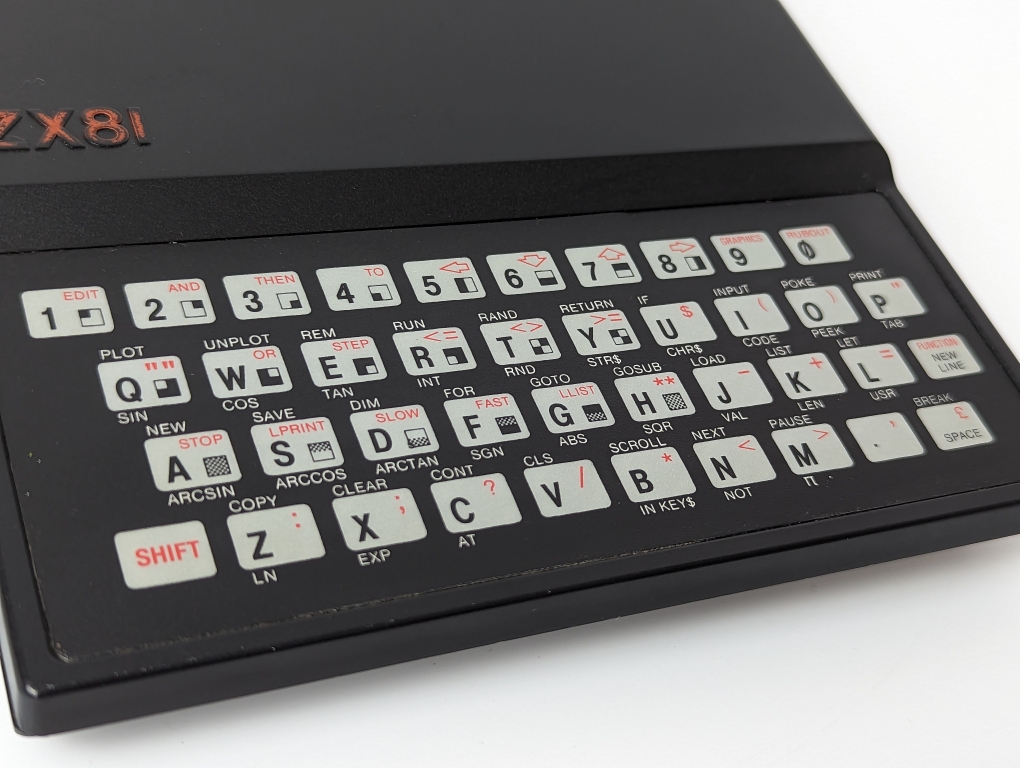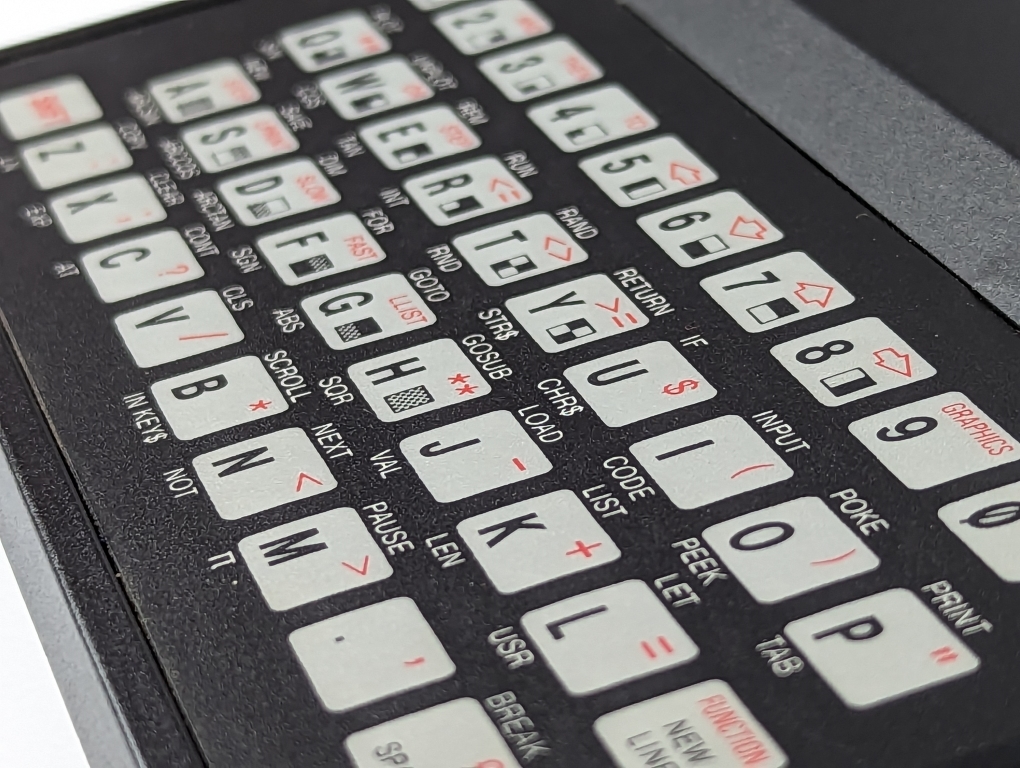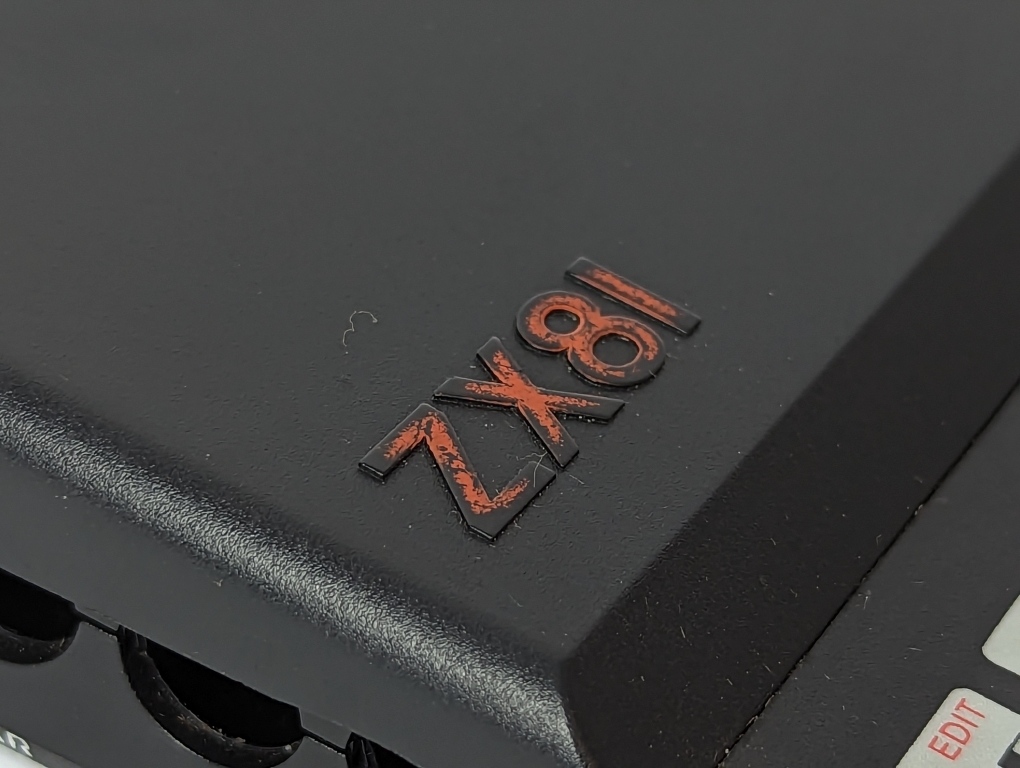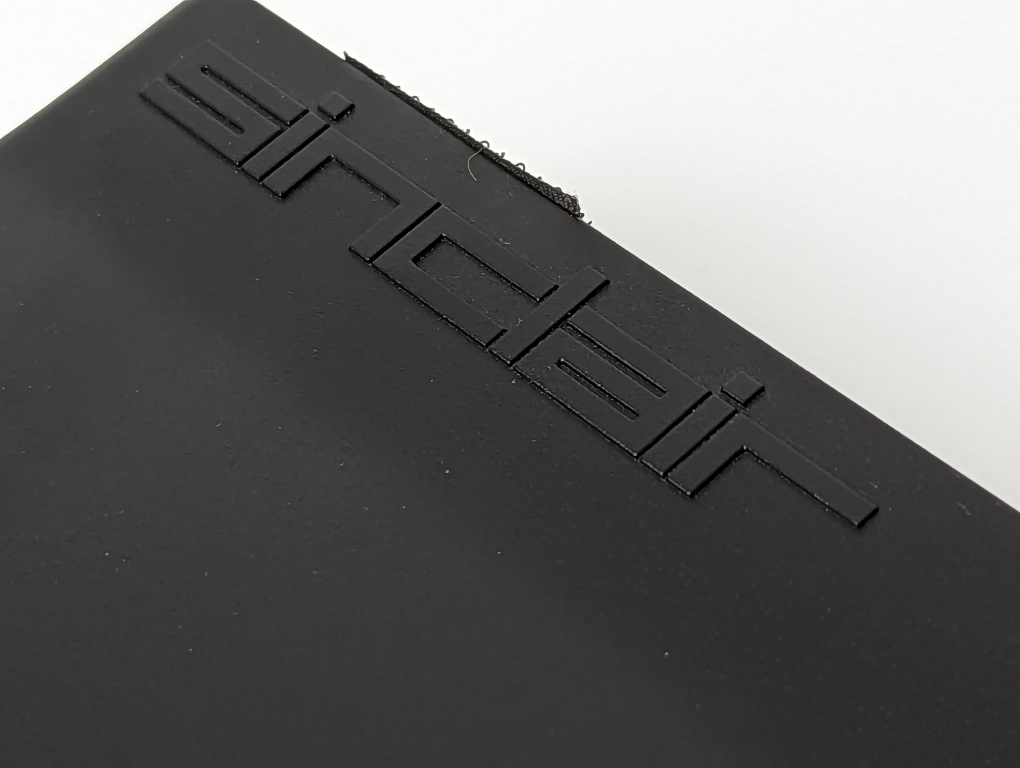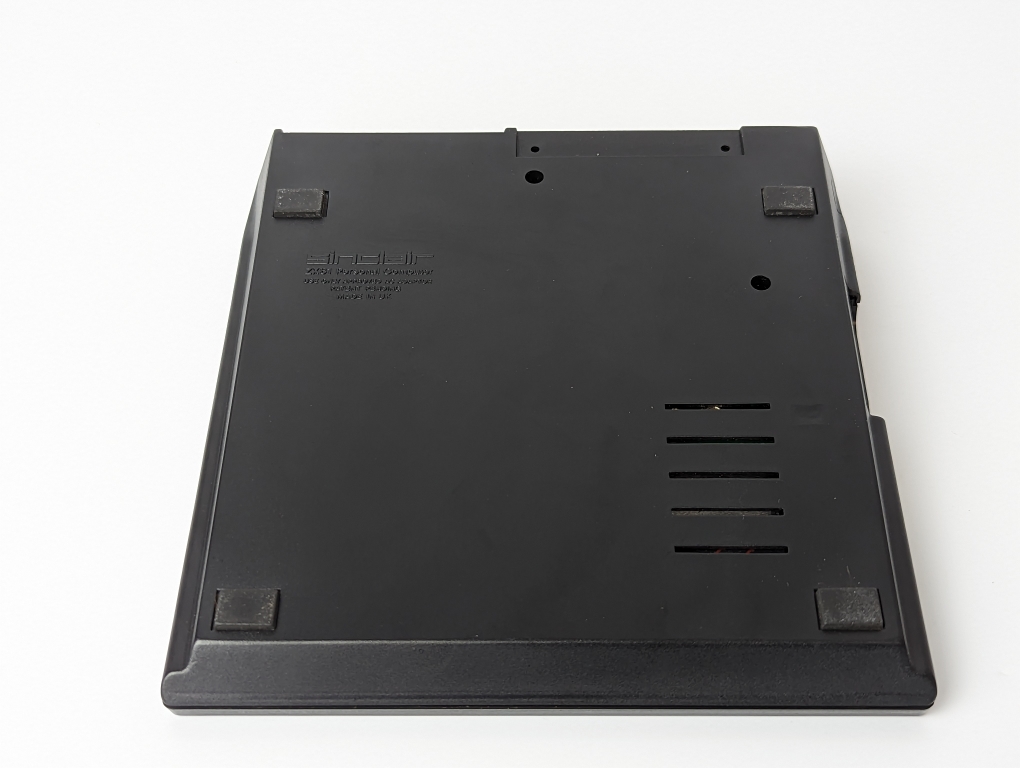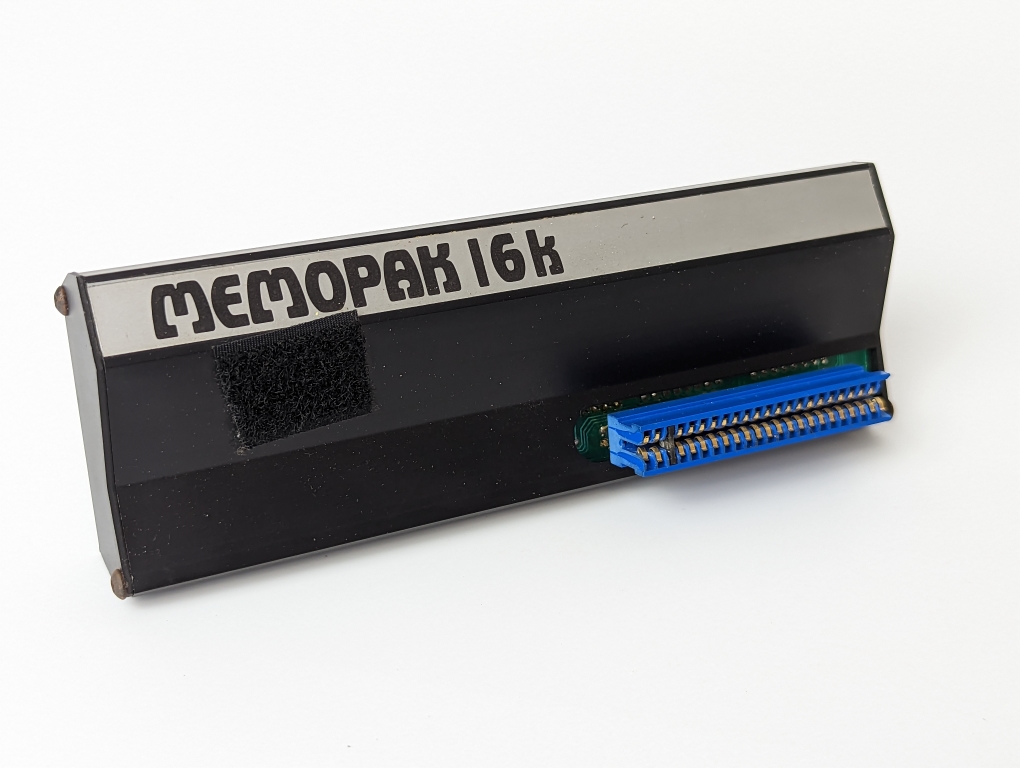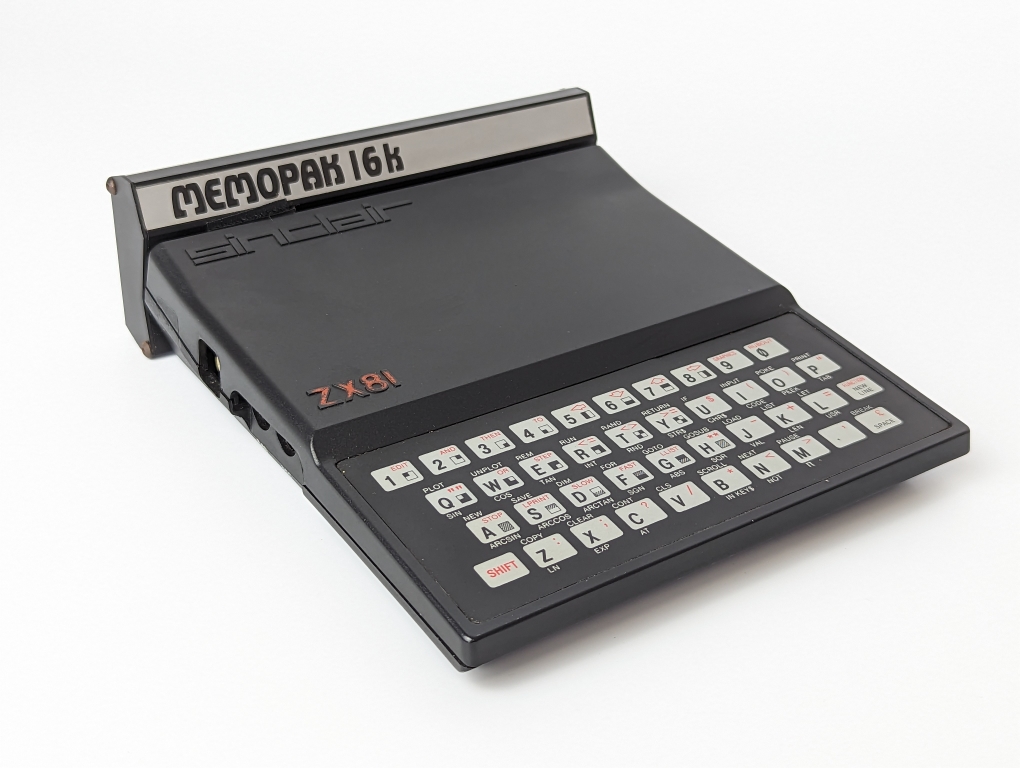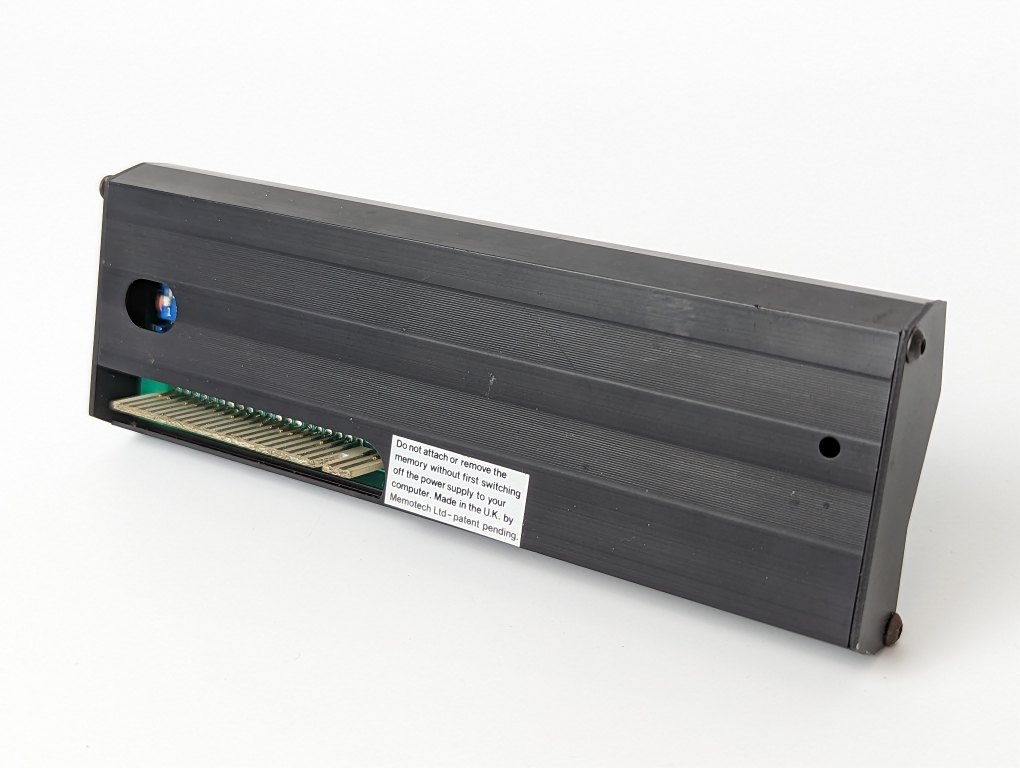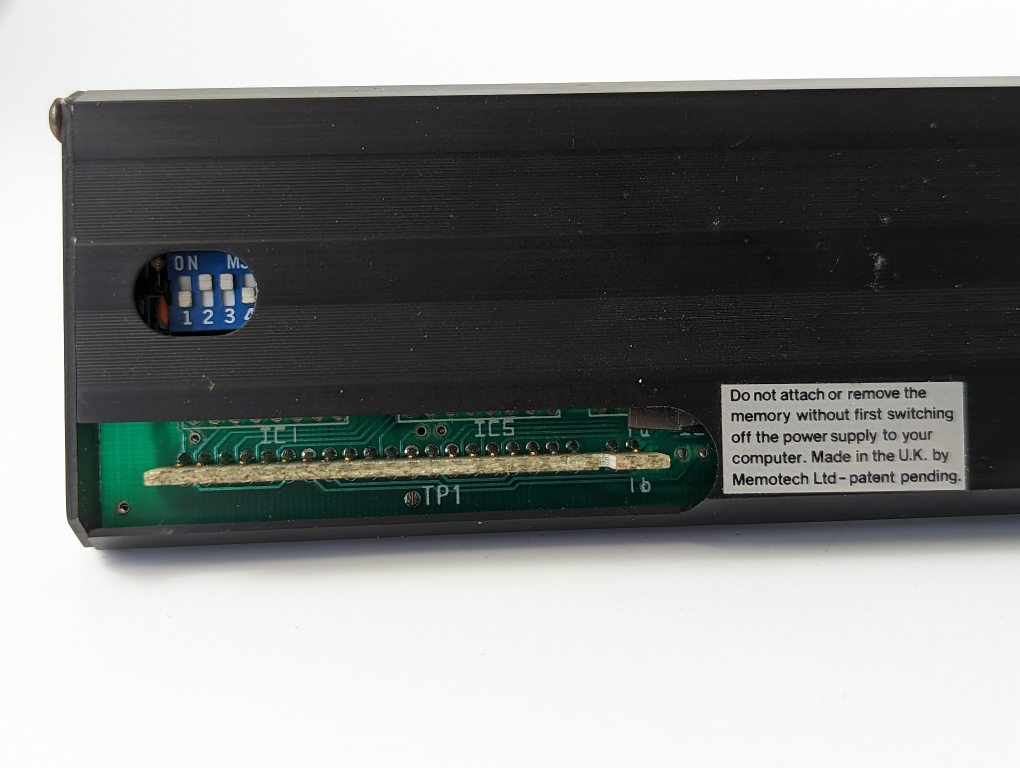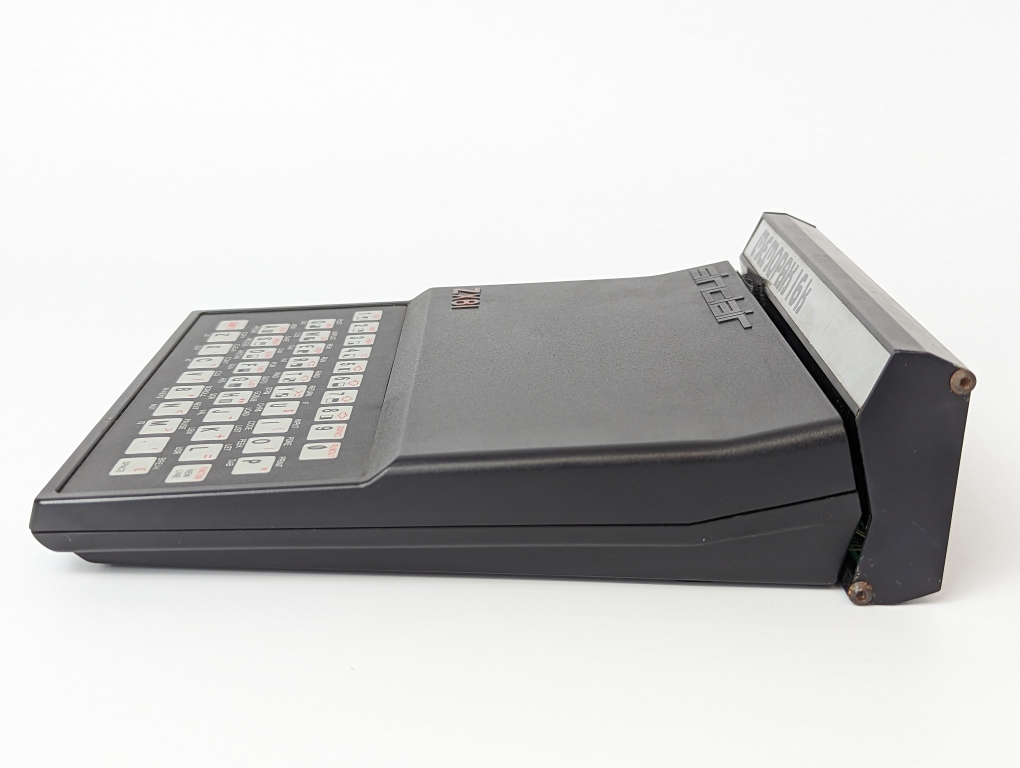The Sinclair ZX81, the successor of the ZX 80, was launched on 5 March 1981 and was designed to be a low-cost introduction to home computing for the general public. The ZX81 was, by far, the cheapest computer to manufacture at the time, and also because of it’s very affordable price became the first mass-market home computer that was available to buy in high street shops like W.H. Smiths. The ZX81 was released in two versions (though with identical components) – a pre-assembled machine or a cheaper kit version, which the user could assemble himself.
The ZX81 was also extensively used in schools and colleges for educational purposes, many people working in the computer industry today had their first computer experiences with the ZX81.
The ZX81 was designed to be small, simple, and above all, inexpensive, with as few components as possible, Its single circuit board is housed inside a wedge-shaped plastic case.
The front part of the case is occupied by an integrated 40-key pressure-sensitive membrane keyboard displaying 20 graphic and 54 inverse video characters. Each key has up to five functions, accessed via the SHIFT and FUNCTION keys or depending on context.
The ZX81’s primary input/output is delivered via four sockets on the left side of the case. The machines video outputs to an ordinary UHF television set to deliver a monochrome picture, rather than to a dedicated monitor.
Two 3.5 mm jacks connect the ZX81 to the EAR (output) and MIC (input) sockets of an audio cassette recorder, enabling programs and data to be saved or loaded onto compact audio cassettes.
The edge connector or external interface at the rear of the ZX81 is an extension of the main printed circuit board. This can be used to communicate with external devices.
The ZX81 was based around the Z-80A CPU which ran at 3.5MHz. It came with 1K of RAM, and 8K of ROM providing a simple BASIC interpreter.
The 1KB RAM could be expanded externally to 16K with the 16K-byte RAM pack. The memory can be expanded externally to a maximum 64K, although this replaces rather than supplements the on-board memory.
With it’s relatively low specs and a maximum resolution of just 64 x 44 characters, the ZX81 was not capable of colour graphics.
Despite its limitations, the ZX81 was extremely popular due to its low cost and relative power, and sold more than 1.5 million units worldwide. The ZX81 at one point sold faster than Timex could manufacture them for Sinclair.
Sinclair released only two official peripherals for the ZX81, a 16 KB RAM pack, and the ZX Printer, both of which plugged into the edge connector at the rear of the ZX81. Enthusiasts and a variety of third-party companies make use of this facility to create a wide range of add-ons for the ZX81,including full-size keyboards, RAM, alternate language ROMs, printer interfaces and more.
The ZX81’s successor, the ZX Spectrum, was released in April 1982. The ZX81 was discontinued in 1984.
The ZX81’s commercial success made Sinclair Research one of Britain’s leading computer manufacturers and earned a fortune and an eventual knighthood for the company’s founder Sir Clive Sinclair.
My ZX81 came with a 3rd-party 16k RAM pack
